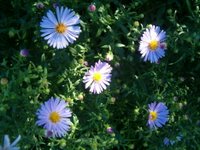
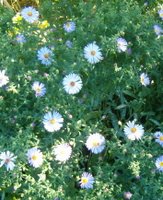
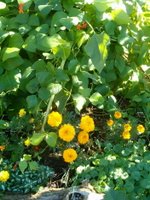

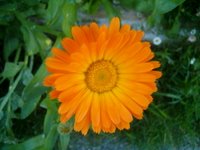
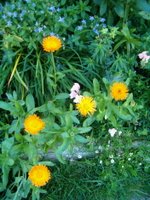
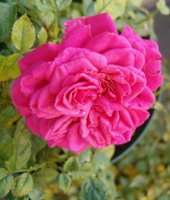

Soil pH, and Preventing pests, pathogens, fungus
I received an e-mail from a regular reader of this blog. He pointed out that my mention of the pH readings in my last posting needed further explanation. I agree with him, so here it is.
Whether you’re growing a garden hydroponically or in soil, daily pH readings are advised, since if your grow medium gets out of whack, your plants will suffer. Most plants grow best when the pH is between 5.8-6.3. If the soil gets too acidic, or too basic for that matter, scraggly, yellowish growth can be the result.
You have to add Advanced Nutrients pH Up or pH Down—depending on the variation from the optimum levels—into the watering mixture. You don’t add it directly into the soil. Your pH reading is most crucial in your root zone, not a few feet away from your plants.
Although pH adjustment is absolutely essential during your growth cycle, measurements should be taken all throughout the life of your plants. The reason I mentioned taking a reading at this late stage, is because soil pH is one among many factors that will determine the vigor and health of the bulbs that you plant in the fall.
Also, I neglected to mention that when our bean house collapsed because of the onset of the wet season and unharvested beans were touching the wet ground, this is an invitation to molds and mildews and other pests and diseases to invade your crop.
By regular application of a highly effective product called Protector, we keep powdery mildew at bay in our garden. It’s not only the beans that are in danger, the large leaves of the pumpkin plants are especially vulnerable to this insidious fungus.
We also use Barricade in the spring, summer, and fall to enable our plants to ward off pests and pathogens. The potassium silicate in this product strengthens cells from the inside out, heightening the plant’s immune response to deter parasites such as spider mites, aphids, and the myriad forms of fungi.
For extra protection, I sprayed my beans with a solution of Scorpion Juice, after the collapse. When used as a foliar spray, you have to mix 5 ml of this product into a Litre (Quart) of water. This also helps the plant the establish immunity from a variety of pathogens, including fungi, viruses, and bacteria.
To make our vegetables taste as sweet as candy, we use Sweet Leaf during the flowering stage. It contains the correct ratio of carbs, sugars, and vitamins to not only make our veggies taste better, but also to increase the quality and quantity of our crop. For this reason, we also add it to our flowers. Witness the proliferation of irises in the pictures.
We like to have a garden around us year round, so we’re taking cuttings of some of the flowers that don’t mind growing indoors during the winter. It’s tricky, because once they get used to outdoor temperatures, the extra heat indoors sometimes adversely effects the transplants. For this reason we use No Shock and Jump Start, in order to minimize the stress on the plants when they go from the outdoor environment into indoor containers.
Indoor gardening during the winter will be the subject of an upcoming blog posting. However, there is a trick to being successful at this endeavor. Just as we made sure that our roots were healthy and vigorous in the spring outdoors, by adding Voodoo Juice, as well as Piranha and Tarantula to our potting soil, we can make sure that our transplanted flowers will develop superior root systems for increased nutrient absorption and optimum growth.
In my experience, Voodoo Juice increases root mass to such an extent that you have to use bigger pots, but it’s worth it. The beneficial microbes contained in Voodoo Juice, coupled with the helpful fungi in Piranha and the beneficial bacteria in Tarantula, will ensure that your plants grow and produce plentiful and much more beautiful blooms than otherwise, whether indoors or out.
BTW, Hedgehog won a ribbon in the Zucchini Races at the local fair, while our son Jim was better at the Ring Toss!
posted by Tim at
10:53 AM
![]()

0 Comments:
Post a Comment
<< Home